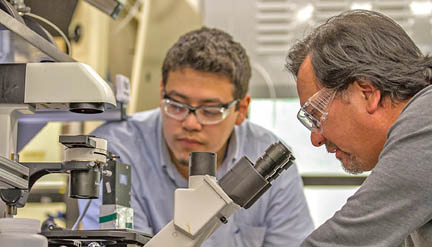Lawrence Livermore National Laboratory researchers have begun to use a new highly advanced 3D printer for electronics that creates miniature circuits on surfaces and substances that were not previously possible. The Optomec Aerosol Jet 500 system, which became operational in January, can print circuits with a broad range of nanomaterials, allowing engineers to manufacture conductors, semiconductors, and microcircuits with an intricacy and flexibility not possible with Livermore's previous technology.
“To be able to print electronic components in 3D is a fundamental game changer,” said Chris Bishop, electronics managing supervisor in LLNL's Materials Engineering Division. “The hard part is figuring out what to focus on first.” The machine can print at 10 microns and is not limited to copper or metallic inks. It's capable of using a number of conductive and nonmetallic materials, even proteins, and it can print on surfaces such as glass, plastic, or kapton film.

Lawrence Livermore electronics technologists Dale Kurita (at microscope) and Julian Larregui examine manufacturing circuits for 3D printing. Photo by Julie Russell/LLNL.
Livermore’s previous prototyping facility was much less versatile, was limited to 50–100 microns, and required a high volume of hazardous chemicals to operate. The Aerosol Jet process begins with a mist generator that atomizes a source material. Particles in the resulting aerosol stream can then be refined in a virtual impactor and further treated on the fly to provide optimum process flexibility.
“When we use it, we can print at different angles and conform it the way we want,” said Dale Kurita, a senior electronics technologist. “There are just unlimited capabilities in the future. This opens up a whole new door for people to look at electronics differently.”
Advertisement
Learn more about Electronic Products Magazine





